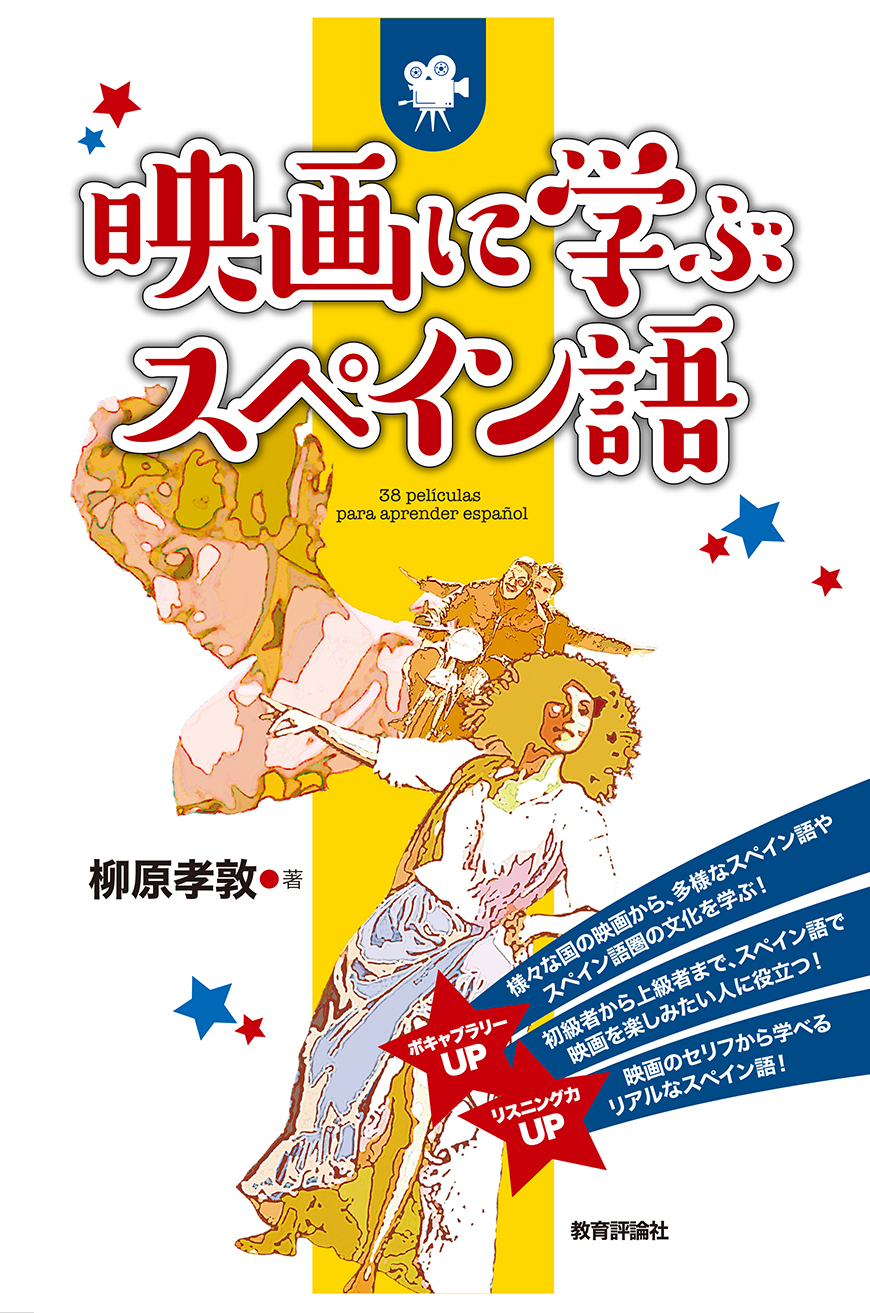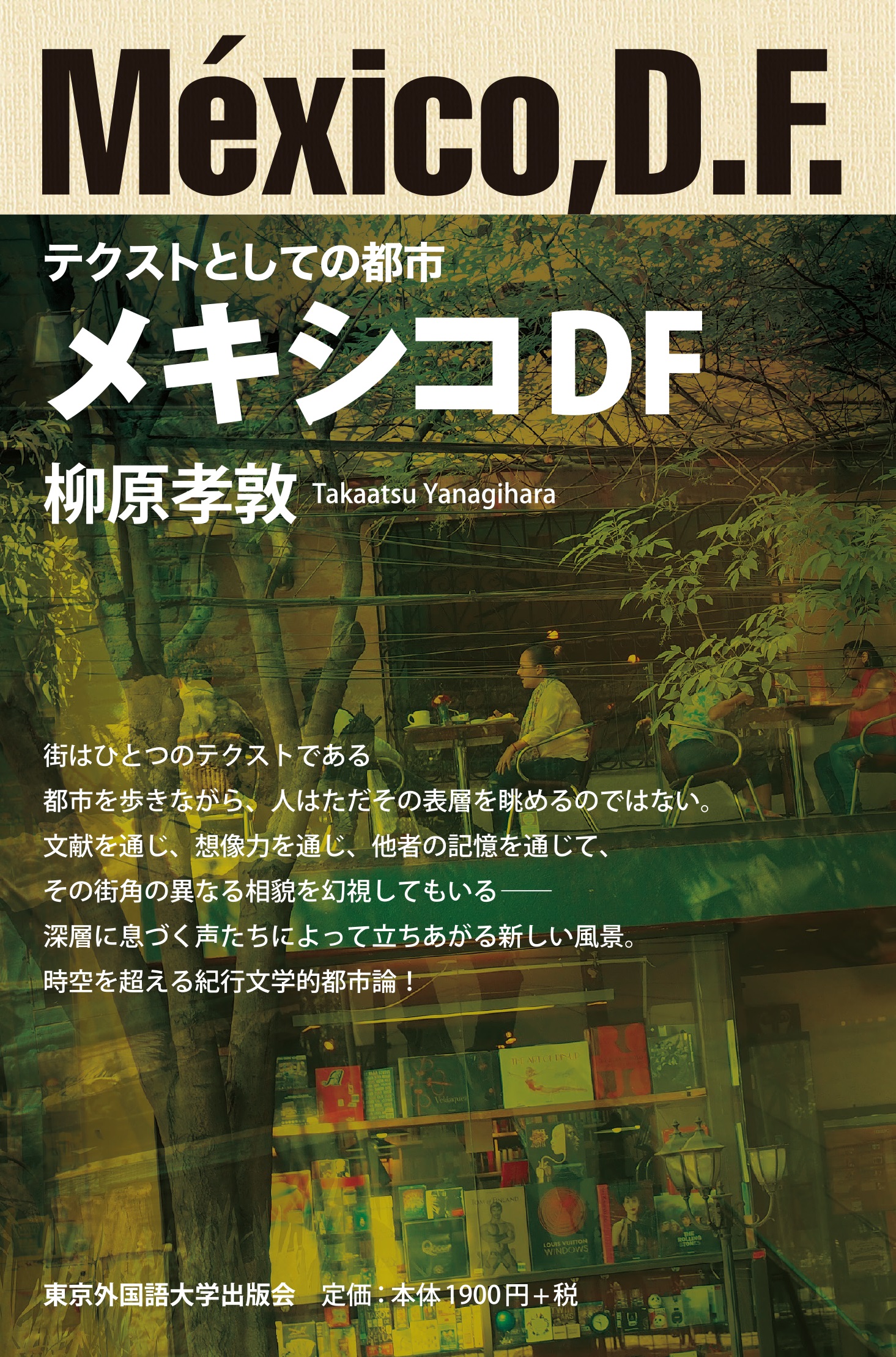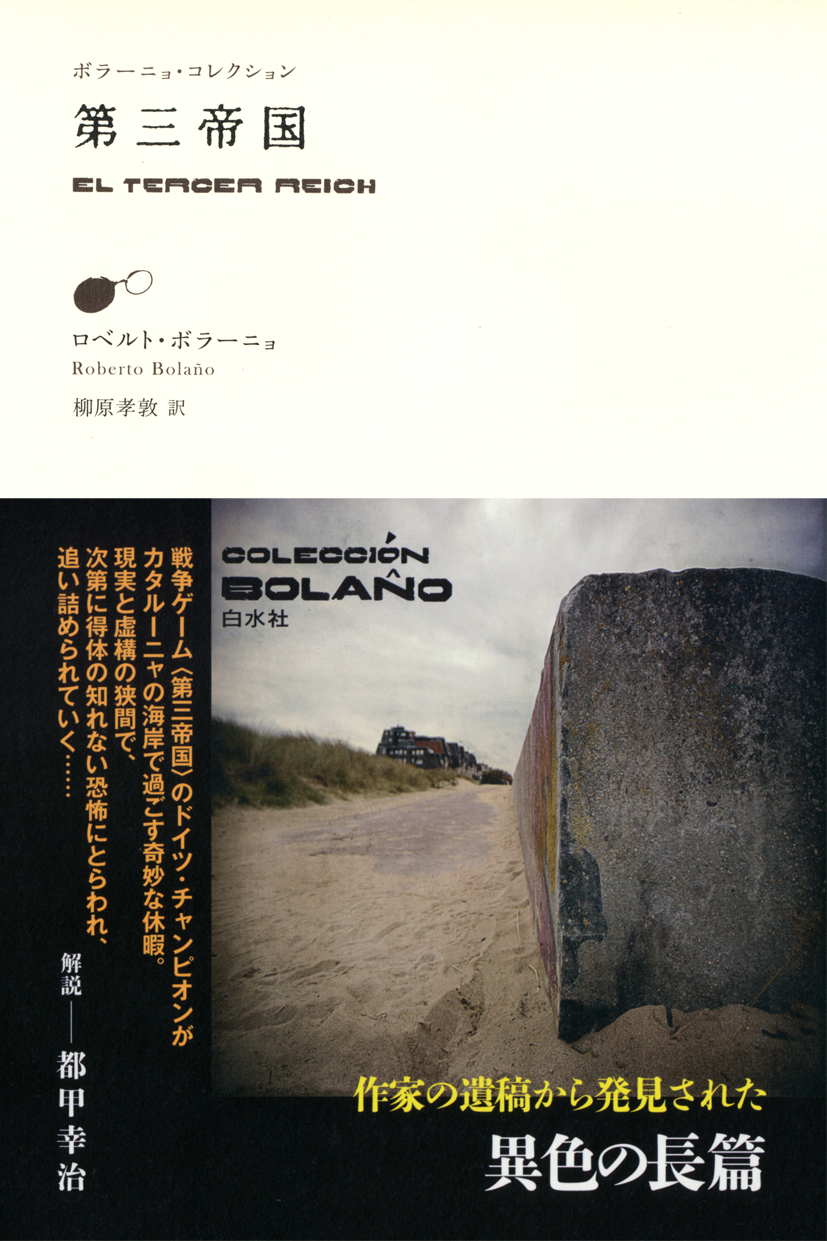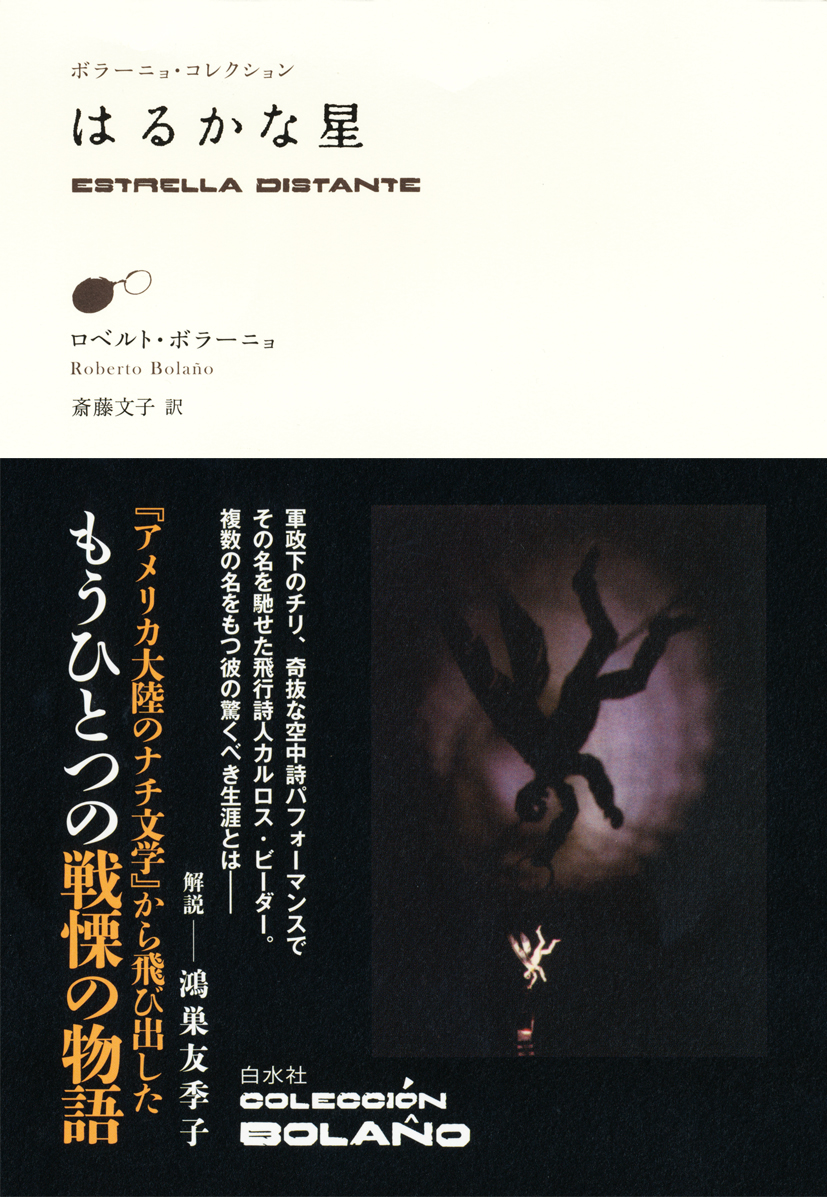
Title
Eiga ni Manabu Spain-go (Learning Spanish from films - 38 películas para aprender español)
Size
160 pages, A5 format, softcover
Language
Japanese
Released
October 29, 2021
ISBN
978-4-86624-047-3
Published by
Kyoiku Hyoron Sha
Book Info
See Book Availability at Library
Japanese Page
Thirty-eight films from the Spanish-speaking world that can be viewed on DVD were selected and introduced in four parts: 1) information about the films (staff, cast, etc.) and introduction of the plot, 2) the original text and Japanese translation of impressive dialogue in the films, 3) the background of the dialogue and explanations of grammar, and 4) review of the films. Numbers 1) and 4) are one page each; 2) and 3) are two pages in total; and four pages are devoted to each film.
As the title suggests, this book is intended as an intermediate or advanced reading resource for learners of Spanish. However, “background of the dialogue” would often be the description of a scene in the films. Most of the four pages therefore serve as commentary on the films. Accordingly, this book can be used as an introduction to Spanish-language films that can be viewed in Japanese homes. There is no book that comprehensively introduces the content of films produced in the Spanish-speaking world, and we can say that this book has value in that respect as well. It is difficult to say that this book offers a fair description of film history from an academic standpoint, because not all important films from the Spanish-speaking world have been introduced to Japan, but at the very least, it can be positioned as a realistic guidebook.
Moreover, from the standpoint of a Spanish textbook, this book, which also discusses films from Argentina and Uruguay, is unique in that it explains the second-person singular pronoun vos, which is unique to those regions, and its corresponding verb conjugations. The Spanish-speaking world is vast, and there are many variants of Spanish, but most Spanish textbooks in Japan introduce the Spanish language using the grammar of Castilian Spanish as the standard. That the second-person plural vosotros and its corresponding verb conjugations do not exist for the overwhelming majority of speakers outside of Spain, that the second-person singular pronoun is vos, not tú, in many countries including Argentina, and that there are unique conjugations corresponding to vos depending on the region, tends to be overlooked. Therefore, this book is one of the few that explains the diversity of the Spanish language.
This book is an expanded reissue of a book with the same title published by Toyo Shoten in 2010 (although the subtitle was “Landscape with Dialogue” in the Toyo Shoten version). Here, articles about four films that were not published in the Toyo Shoten version, even though their manuscripts were submitted, are included. However, since this book does not include films that were produced after the first edition was published, the films discussed are essentially limited to those released in Japan in or before 2009. Nevertheless, it does feature important authors and films, such as those from directors who are popular even in Japan like Luis Buñuel, Carlos Saura, Víctor Erice, and Pedro Almodóvar, to films that represent the trend of “new films” that were released in various parts of Latin America from the mid-20th century onward.
After the first edition was published by Toyo Shoten, many people in the same field asked if there would be a sequel. A sequel is anticipated that discusses films released after 2010. However, since the Toyo Shoten version had become difficult to obtain, this expanded and reissued edition can be considered significant for films released before that. A sequel will likely depend on the popularity of this book.
(Written by YANAGIHARA Takaatsu, Professor, Graduate School of Humanities and Sociology / 2022)



 Find a book
Find a book




